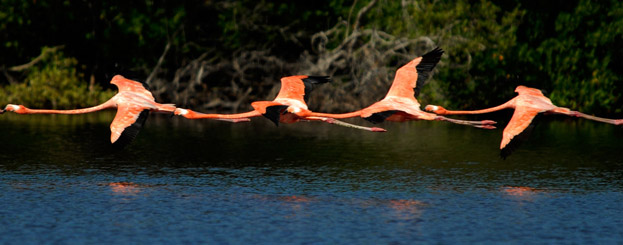
IN FOCUS: Saxon-Bohemian Switzerland in the heart of Europe
A conservation atlas for transboundary conservation areas
Restoration of the Rio Bravo-Grande
By Maja Vasilijević and Boris Erg
Transboundary conservation is an essential approach in nature conservation. The number of transboundary conservation initiatives began to increase significantly from the end of the 1980s. With more than 200 transboundary conservation complexes worldwide, cooperation across international boundaries provides significant opportunity for effective conservation of nature, including the accomplishment of an array of economic and socio-political benefits. The challenge of operating in the transboundary context is considerable due to the complexities that arise from such approaches, e.g. differing legal systems and political will, cultural and language differences, unequal levels of professional standards and economic development. Considering the many challenges encountered by relevant parties in pursuing transboundary conservation initiative, this type of conservation can be regarded as one of the most complex and demanding in the world.
A number of organisations emerged as the primary promoters of transboundary conservation (e.g. IUCN, EUROPARC Federation, Peace Parks Foundation, United Nations Educational, Scientific and Cultural Organisation (UNESCO), United Nations Environment Programme (UNEP), Conservation International, International Tropical Timber Organization (ITTO), etc.). These organizations and many others all have differing systems of transboundary related knowledge distribution, thus locating proper transboundary resources can be difficult. IUCN recognised the need for a vast storehouse of transboundary knowledge that is organized in such a way as to guide transboundary conservation practitioners and the many other potential audiences for this type of information including the private sector, academia, conservation practitioners, donor agencies and the general public. In 2003, at the Vth IUCN World Parks Congress in Durban, South Africa, a Global Transboundary Protected Areas Network was launched, with the goal to act as a clearinghouse for all transboundary protected area information, and to allow for communication between diverse audiences across the globe. This global network is facilitated by the IUCN WCPA Transboundary Conservation Specialist Group, which in 2009 changed its name from the Transboundary Protected Area Task Force. Following this change in the scope of work of the Specialist Group, the global network is now reffered to as the Global Transboundary Conservation Network.
The network currently consists of around 200 members and partners linked through an e-mail listserv and other informal arrangements, managed centrally by the IUCN WCPA Transboundary Conservation Specialist Group. In 2010, the Specialist Group launched an electronic newsletter, called TB eNEWS, aimed at enhancing the information exchange between transboundary practitioners and individuals interested in transboundary conservation, and wider community. The TB eNEWS, as well as other information relating to transboundary conservation, is available for downloading at this website.
The Global Transboundary Conservation Network aims to fulfill the following functions:
Provide a virtual hub for all aspects of transboundary conservation knowledge (e.g. publications, case studies, centres of excellence, etc.); Develop a comprehensive database containing relevant information on transboundary conservation complexes worldwide; Establish a virtual Transboundary Legal Resource Centre; Act as a point of contact for the transboundary conservation community and respond to questions from the public; Encourage strengthened communication and exchange of experience between managers engaged in transboundary conservation initiatives.






